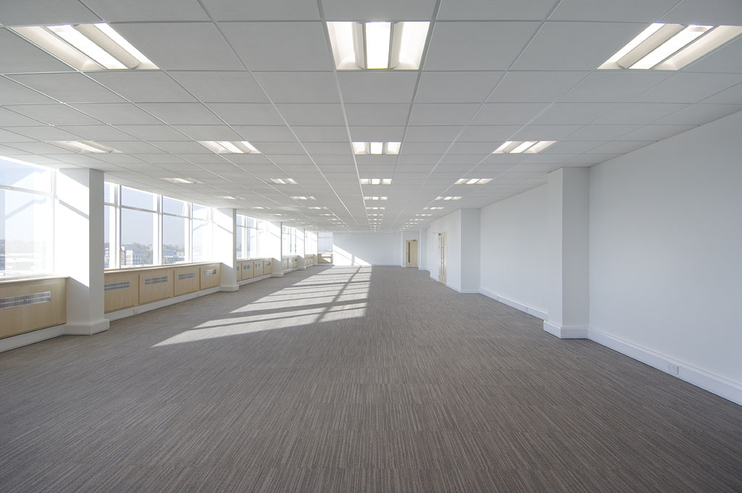Proposed Changes To Empty Property Relief Confirmed
Mark Linning, Head of Professional at Bulleys outlines some of the possible ramifications together with a number of legitimate measures to avoid business rates on vacant commercial property.
Mark comments:
“One of the most controversial announcements in Gordon Brown’s final budget speech before becoming Prime Minster was to change the existing vacant property relief provisions for commercial property”.
Prior to 1st April 2008, all vacant industrial and warehouse premises paid no business rates. All vacant offices and retail premises paid 50% business rates after receiving an initial 100% relief for 3 months.
The Rating (Empty Properties) Act 2007 drastically changed the liability to pay business rates when a property is empty. From 1st April 2008 empty offices and shops only receive 100% relief for the first 3 months and thereafter pay a full rate liability. For owners and occupiers of industrial and warehouse property, the change was even more drastic. After receiving a 100% relief for the first 6 months all industrial and warehouse occupiers are liable to a full rate liability.
Mark goes on to comment:
“Furthermore, if a property has received or is already receiving its existing void rate allowance, it can not receive a further three or six month allowance”.
Many owners of commercial and industrial property will recall the situation that arose in the early 1980’s when occupiers and owners went to the extent of removing roofs to render properties “incapable of beneficial occupation” to avoid paying business rates.
In an attempt to avoid a similar situation arising, the Government has introduced “Anti Avoidance Legislation” whereby prior to and leading up to 1st April 2008, buildings can be assessed on the assumption that the building was in the same physical state as it was prior to any “constructive vandalism” such as the removal of a roof.
Rating surveyors acting on behalf of rate payers therefore need to come up with some ingenious solutions to limit their clients rate liability. Mark outlines some of the legitimate potential Anti Avoidance measures that may be considered as follows:
• Charities or community amateur social clubs (CASC’s) legitimately receive 80% mandatory relief. Owners of large property holdings may consider setting up their own Charities or CASC’s and let vacant properties to charities or CASC’s.
• Buildings that are subject to closure orders or dangerous structure notices are not capable of beneficial occupation and therefore pay no business rates. Owners of older properties in particular may thereafter wish to consider applying for such an order or notice in attempt to avoid paying business rates.
• A property is deemed to have been occupied if occupied for a period of 6 weeks. Thereafter, when it becomes vacant, the appropriate three or six month void rate allowance will be applicable. Landlords may therefore wish to consider intermittent lettings of 6 – 8 weeks and to move tenants to alternative accommodation in multi let properties to try and avoid and limit their overall rate liability.
• Listed Buildings are currently exempt from business rates whether occupied or vacant. Buildings located in a conservation area are not exempt.
Therefore, if an owner obtains a protected listing for a building, it will be exempt from paying business rates.
• If a new building does not have a Completion Notice, it is not liable for business rates. The Billing Authority can only serve a Completion Notice on the owner of a new building where it comes to the Billing Authorities notice that the work remaining is such that the building can “reasonably be expected to be completed within three months”
Mark comments further regarding the issue of Completion Notices as follows:
“Landlords or owners should also make sure that Billing Authorities have issued a Completion Notice in accordance with the required regulations. If Building Authorities have not complied correctly with the regulations, the Completion Notice may be invalid and have to be re-served, reducing the rate payer’s liability.”
The estimated loss in rate yield on empty properties in England is estimated at £1.3 billion in 2005/2006 and the income to be raised for 2007/2008 is estimated to be £950 million. It is argued by Government, however, that the legislative reform is to encourage owners to try and develop or use vacant property for alternative uses.
“We have seen developers put on hold any speculative development”.
Mark also comments that “Manufacturing expansion is extremely unlikely as a result of the recession particularly if proposed moves or expansions are likely to result in double liability to pay rates.
Mark concludes that:
“Ironically, Gordon Brown’s decision to restrict empty property relief to encourage reoccupation and redevelopment of vacant properties has had exactly the opposite effect. The initial legislation was rushed through with no consultation and in my opinion will encourage Landlords and Developers to demolish existing buildings or restrict development to avoid rate liability. This will result in a detrimental impact upon property activity and values in what is an extremely uncertain market.
Bulleys Chartered Surveyors have offices in Wolverhampton, Oldbury and Telford and are appointed Royal Institution of Chartered Surveyors rating helpline advisors. For further advice and a free initial telephone consultation on how to appeal your rating assessment, contact Mark Linning, MRICS on 01902 778582 or email on mark.linning@bulleys.co.uk.



